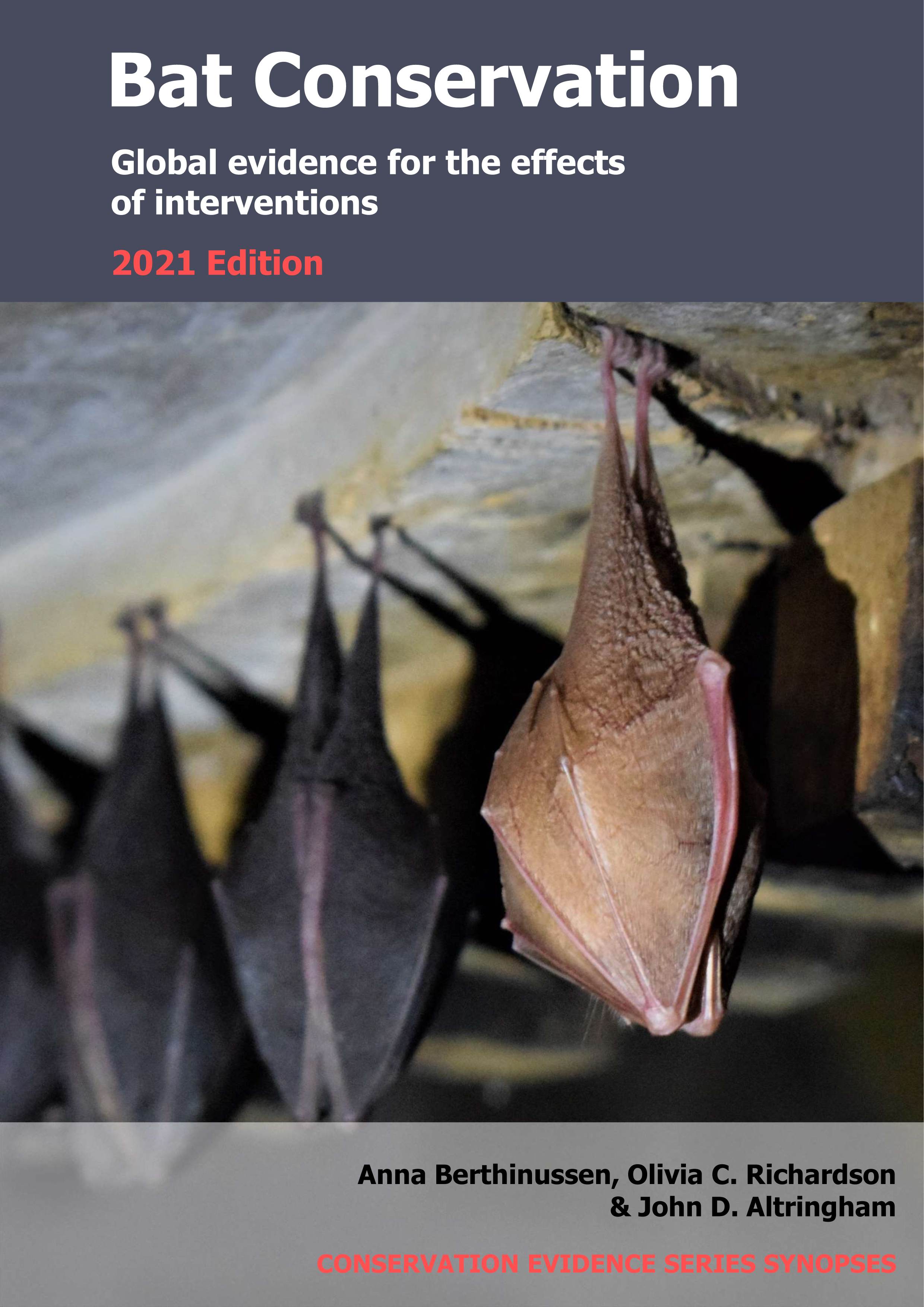Maintain microclimate in closed/abandoned mines
-
Overall effectiveness category Unknown effectiveness (limited evidence)
-
Number of studies: 1
View assessment score
Hide assessment score
How is the evidence assessed?
-
Effectiveness
45% -
Certainty
20% -
Harms
0%
Study locations
Supporting evidence from individual studies
A before-and-after study in 2004–2007 at one mine in Southern Illinois, USA (Carter & Steffen 2010) found that modifying the microclimate within an abandoned mine by closing a human-made entrance resulted in an increase in the number of hibernating bats, including Indiana bats Myotis sodalis. Before the entrance was closed, <500 bats were counted hibernating in the mine and internal temperatures varied widely during the hibernation period (-2–18°C). After the entrance was closed, internal temperatures were more stable (11-13°C), and more bats hibernated within the mine (one year after: 1,500 bats; two years after: 2,500 bats). In summer 2005, a culvert with a door (1.2 m wide) was built into the horizontal human-made entrance shaft and the rest of the entrance was filled in. Three other entrances to the mine were left open. Hibernating bats were counted within the mine in 2004 before the entrance was closed, and in 2006 and 2007 after the entrance was closed.
Study and other actions tested
Where has this evidence come from?
List of journals searched by synopsis
All the journals searched for all synopses
This Action forms part of the Action Synopsis:
Bat Conservation
Bat Conservation - Published 2021
Update 2020





)_2023.JPG)














